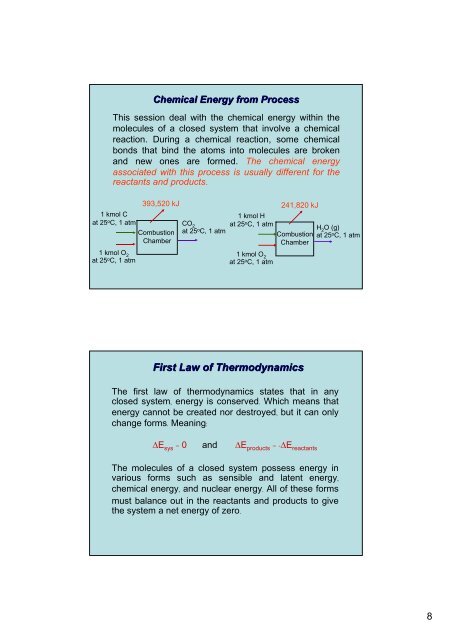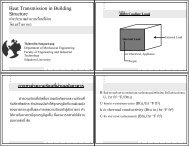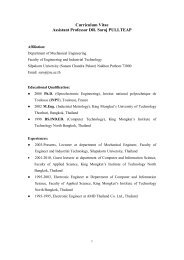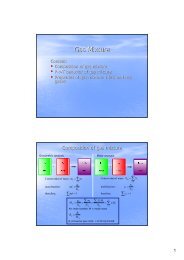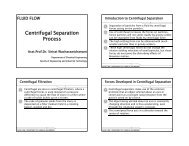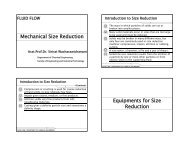Chemical Reactions
Chemical Reactions
Chemical Reactions
You also want an ePaper? Increase the reach of your titles
YUMPU automatically turns print PDFs into web optimized ePapers that Google loves.
<strong>Chemical</strong> Energy from Process<br />
This session deal with the chemical energy within the<br />
molecules of a closed system that involve a chemical<br />
reaction. During a chemical reaction, some chemical<br />
bonds that bind the atoms into molecules are broken<br />
and new ones are formed. The chemical energy<br />
associated with this process is usually different for the<br />
reactants and products.<br />
393,520 kJ<br />
1 kmol C<br />
at 25 o C, 1 atm<br />
Combustion<br />
Chamber<br />
CO 2<br />
at 25 o C, 1 atm<br />
1 kmol H<br />
at 25 o C, 1 atm<br />
241,820 kJ<br />
Combustion<br />
Chamber<br />
H 2<br />
O (g)<br />
at 25 o C, 1 atm<br />
1 kmol O 2<br />
at 25 o C, 1 atm<br />
1 kmol O 2<br />
at 25 o C, 1 atm<br />
First Law of Thermodynamics<br />
The first law of thermodynamics states that in any<br />
closed system, energy is conserved. Which means that<br />
energy cannot be created nor destroyed, but it can only<br />
change forms. Meaning:<br />
∆E sys = 0 and ∆E products =-∆E reactants<br />
The molecules of a closed system possess energy in<br />
various forms such as sensible and latent energy,<br />
chemical energy, and nuclear energy. All of these forms<br />
must balance out in the reactants and products to give<br />
the system a net energy of zero.<br />
8


